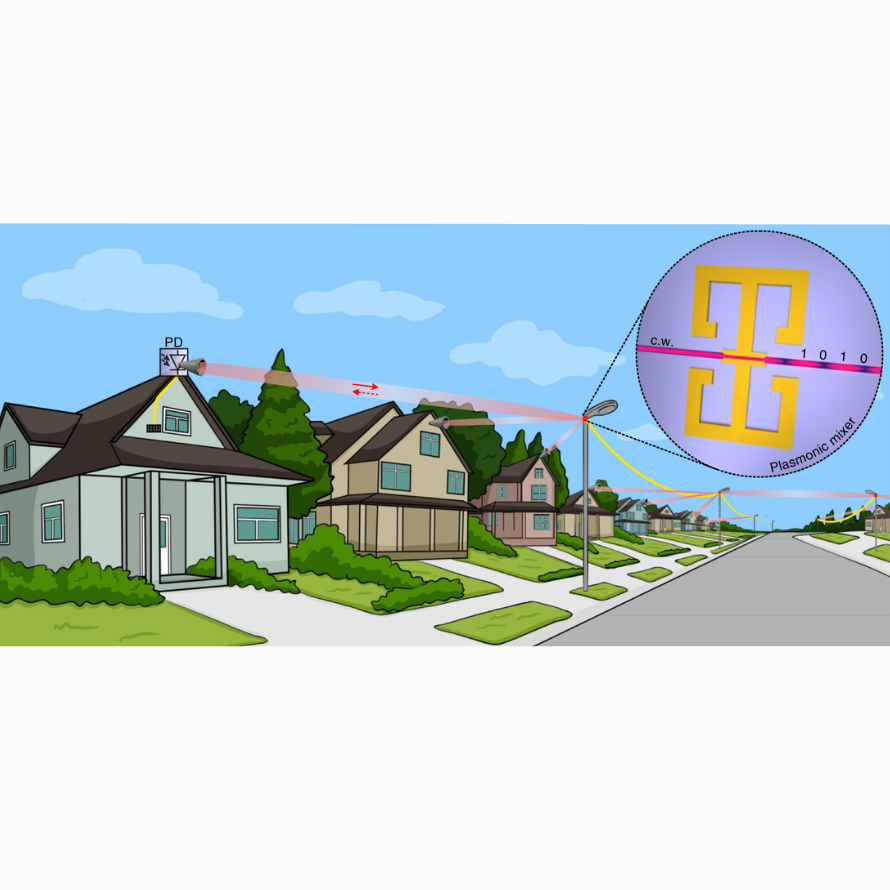Microwave plasmonic mixer in a transparent fibre–wireless link
Salamin, Yannick, et al. “Microwave plasmonic mixer in a transparent fibre–wireless link.” Nature photonics 12.12 (2018): 749-753.
Abstract:
To cope with the high bandwidth requirements of wireless applications1, carrier frequencies are shifting towards the millimetre-wave and terahertz bands. Conversely, data is normally transported to remote wireless antennas by optical fibres.
Therefore, full transparency and flexibility to switch between optical and wireless domains would be desirable. Here, we demonstrate a direct wireless-to-optical receiver in a transparent optical link. We successfully transmit 20 and 10 Gbit s−1 over wireless distances of 1 and 5 m, respectively, at a carrier frequency of 60 GHz.
Key to the breakthrough is a plasmonic mixer directly mapping the wireless information onto optical signals. The plasmonic scheme with its subwavelength feature and pronounced field confinement provides a built-in field enhancement of up to 90,000 over the incident field in an ultra-compact and complementary metal-oxide–semiconductor compatible structure. The plasmonic mixer is not limited by electronic speed and thus compatible with future terahertz technologies.
Deploying the fibre-to-the-home can be costly. One possible scenario to reduce the cost, while still providing high-capacity connectivity for the end user, is to use virtual fibres (red beams) for the last few metres. Here, optical fibres (yellow lines) are deployed to the residential area either underground or aboveground using existing cable platforms. Lamp posts located close to the houses could host optical-to-wireless converters for the downstream data (red dashed arrow) and wireless-to-optical converters (plasmonic mixer) for the upstream data (red arrow). A direct converter could very simply and cost efficiently map the wireless signal onto a common laser signal, which then can be routed back to the central office. PD, photodiode; c.w., continuous wave.
